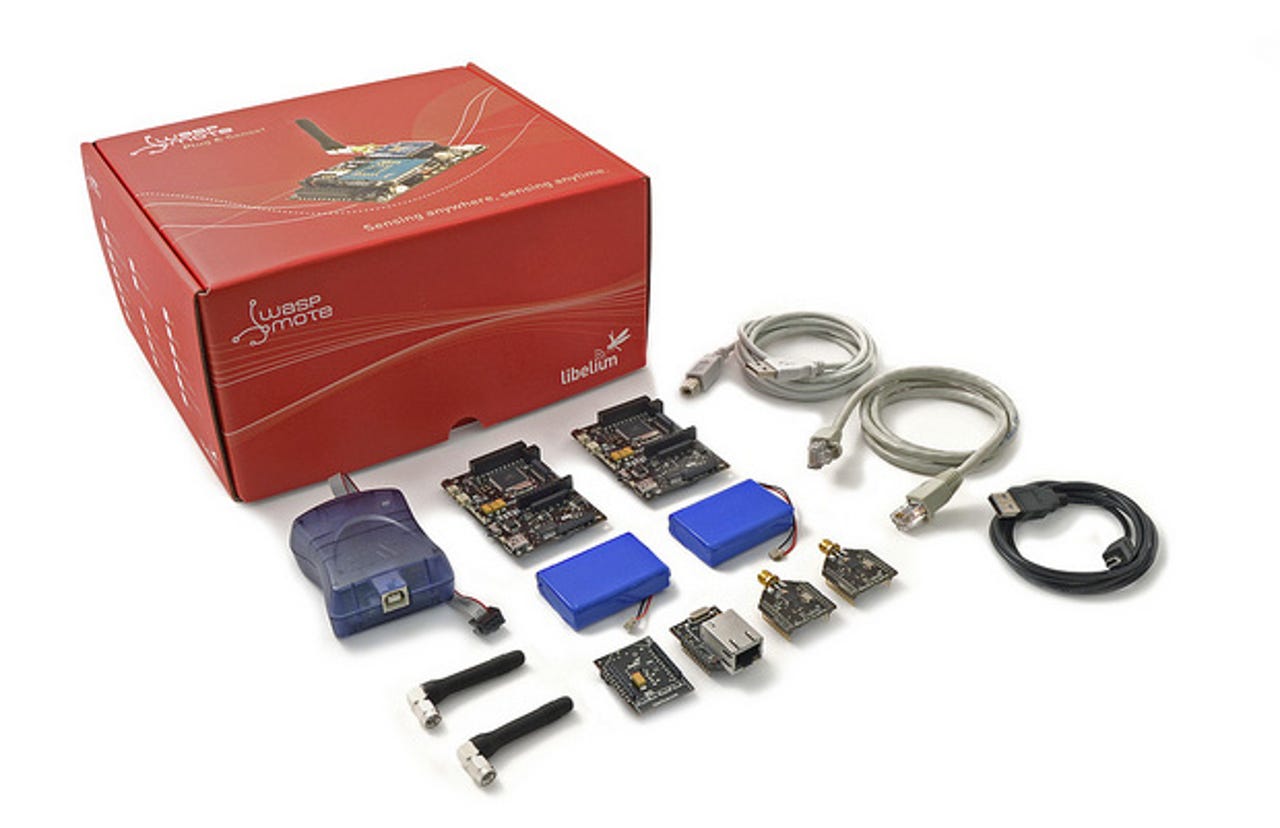IBM and Libelium release a 6LoWPAN development platform for IoT applications

IBM has teamed up with wireless sensor network specialist Libelium to deliver a starter kit for developing and testing Internet of Things (IoT) applications in areas such as smart cities, e-health and environmental monitoring. Comprising IBM's Mote Runner SDK and Libelium's Waspmote sensor platform, Waspmote Mote Runner development platform allows researchers to explore the benefits of 6LoWPAN (IPv6 over Low-power Wireless Personal Area Network) connectivity, both in simulation and in small-scale physical testbeds.

Developed at IBM's Zurich Research Laboratory, Mote Runner integrates a virtual machine running a real-time operating system on the sensor (mote) platform, for which developers can build custom applications in Java or C# using an Eclipse-based SDK. Mote Runner works with sensors that use the 6LoWPAN protocol over the IEEE 802.15.4 link layer to create a mesh network connecting any sensor node to a gateway that forwards the IPv6 packets (via a spot of IPv4/IPv6 tunneling) on to user-facing IPv6 servers on the internet.
Libelium's existing Waspmote platform supports a variety of wireless connectivity modules (802.15.4, GPRS, 3G, NFC, wi-fi and Bluetooth), but the hardware in the Waspmote Runner kit is 6LoWPAN only (802.15.4 at 2.4GHz and 868MHz). The gateway node also includes an Ethernet module for connection to a PC that handles the Ipv4/IPv6 tunneling. Waspmote nodes included in the two available kits (a basic Networking Kit or a more extensive Lab Kit with extra sensors and a couple of solar panels) do not come with firmware ready-loaded: this must be compiled using the Mote Runner SDK. More than 60 sensors can be fitted to Waspmote nodes, including modules for detecting carbon monoxide and dioxide, soil moisture, the presence of people or vehicles, humidity, temperature, radiation, electric current, light levels and more.
"We have worked closely with IBM to offer a development platform that can be used for both simulation and real IPv6 sensor connectivity," David Gascón, Libelium's CTO and co-founder, said in a statement. "This platform is a powerful tool for improving and testing 6LoWPAN capabilities in the context of wireless sensor networks and the Internet of Things."
The Waspmote Mote Runner Networking Kit costs €1,500, while the Lab Kit is priced at €2,550.
Further reading
- IT in 2020: Internet of things, digital business enthusiasm abounds
- Internet of things: $8.9 trillion market in 2020, 212 billion connected things
- Intel's Internet of Things roadmap led by low-power chips
- Is it time for businesses to give up on shrink-wrapped software?
- The Internet of Things is 'fundamentally about economic value'
- Tapping M2M: The Internet of Things